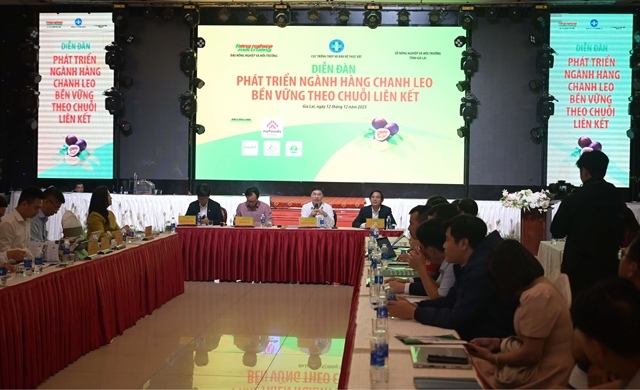Garment, textiles still a hot sector
Garment, textiles still a hot sector
A series of recent new foreign investments show that Vietnam’s garment and textile industry remains one of the nation’s hot business sectors thanks to an abundant labour force and anticipated trade agreements.

According to Binh Thuan Provincial Industrial Parks Management Authority, Korea’s Hansoll Textile has worked with the local authorities to find a location for its textile manufacturing plant valued at around $200 million including weaving and dyeing processes.
Japan-funded NSK Vietnam’s garment supporting industry plant in Long Hau Industrial Park in southern Long An province also plans to expand its investment on raw materials supply, Tao Takeda, director of NSK Vietnam told VIR.
Vietnam National Textile and Garment Group (Vinatex) has implemented its three key projects for production of raw materials for garment and textile makers including yarn and woolen.
Vietnam’s garment and textile exports have had 25-28 per cent growth rates annually in the recent years. Vietnam should lure foreign investment focusing on yarn manufacture, weaving, dyeing and premium products, said Vu Duc Giang, president of Vietnam Textile and Apparel Association (Vitas).
Trade agreements between Vietnam and other countries, especially the Trans-Pacific Partnership (TPP), will bring benefits to Vietnam-located garment exporters, especially if Vietnam invests more in weaving and dyeing stages. This investment requires large funds and it is an advantage of foreign companies, said Nguyen Van Tuan, Vitas’ deputy general secretary.
This year, Vietnam has seen other big foreign investment projects in garment and textile industry.
In September, China’s Sunrise Shengzhou inked a deal with Vietnam’s Thien Nam Investment and Development to establish a joint venture to call for Thien Nam Sunrise Textiles to build a $24 million factory in northern Nam Dinh province’s Bao Minh Industrial Park, with the production capacity of 300 tonnes of knitted fabrics and one million metres of woven fabrics per month.
Previously, Korea-funded Kyung Bang Vietnam has spent $40 million to implement the first phase of a spinning factory with the capacity of 6,000 tonnes annually in southern Binh Duong province’s Bau Bang Industrial Zone.
Hong Kong’s Texhong Company is building a spinning factory valued $300 million in the Hai Yen Industrial Zone in northern Quang Ninh province.
Vinatex has also joined forces with Japanese Itochu to set up a joint venture to run a 50,000 spindle factory, capitalised at $120 million in northern Nam Dinh province’s Bao Minh Industrial Zone.
According to Nguyen Phuong Lan, vice director of Dong Nai Provincial Industrial Parks Management Authority (Diza), Dong Nai is home of some big garment and textile investors such as Formosa, Hansoll and, Texhong Affordable.
“Garment and textiles will continue to be the important sector in Vietnam in the next 20 years because Vietnam will take time to improve the quality of its labour force for sectors with a higher skilled labour demand,” Lan said.
According to the Ho Chi Minh City Export Processing and Industrial Zones Management Authority (Hepza), licenced projects of garment and textile in Hepza recently were to churn out premium product.
While Vietnam is a good location for labour-intensive businesses, Thai entrepreneurs should be sure to build their factories in locations that have an adequate labour supply, said Santi Jawtrakul, general manager of Alliance One Apparel Co, the Vietnamese subsidiary of Thailand’s Liberty Garment.
The Alliance One unit started operating a $15 million apparel plant in 2007 in southern Ben Tre province’s Giao Long Industrial Park, having 4,700 employees. It recently built a $5 million second factory in the same area, which employs 1,800 workers.
According to Giang in the first nine months of 2012, Vietnam’s garment and textile exports were valued at $12.6 billion. Vietnam targets the whole year export of $17 billion with expectation to reach $20-21 billion and $25-27 billion in 2013 and 2015 respectively. Vietnam aims to be among top three biggest garment and textile exporters globally in 2020
vir

























